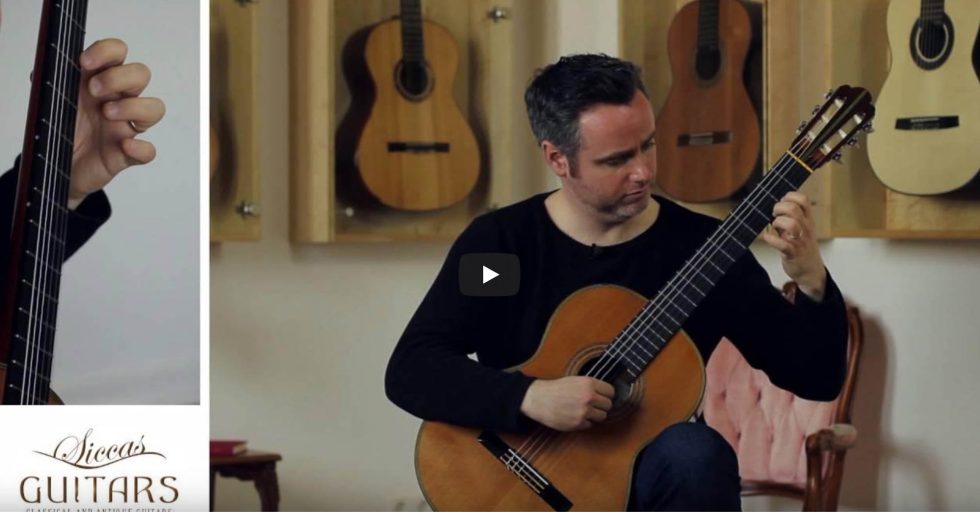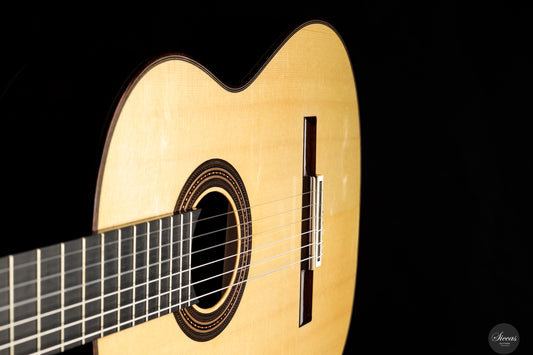
Mastering Vibrato on Classical Guitar: A Tutorial with Matthew McAllister
At Siccas Guitars, we're committed to helping classical guitarists refine their techniques with expert guidance. In our latest video, the renowned guitarist Matthew McAllister shares valuable insights into one of the most expressive techniques in classical guitar playing—vibrato. This tutorial breaks down the intricacies of vibrato and demonstrates how to apply it effectively to enhance the emotional depth of your music.
Vibrato is an essential tool for classical guitarists, allowing for a wide range of expressive possibilities. Whether you're looking to add warmth, sustain, or intensity to a melody, mastering vibrato is key to taking your playing to the next level.
What is Vibrato in Classical Guitar?
Vibrato is the slight oscillation of pitch, achieved by moving the fingertip on the fretboard in a controlled manner. This technique adds richness and depth to the sound by making the note appear to "sing." In classical guitar, vibrato can greatly influence the expressiveness of a piece, giving life to sustained notes and providing emotional nuance.
In the video, Matthew McAllister demonstrates two primary types of vibrato used by classical guitarists:
- Horizontal vibrato: Moving the fingertip back and forth along the length of the string. This is the most common type of vibrato in classical guitar and helps elongate the note and create a warm, singing tone.
- Vertical vibrato: Bending the string up and down, similar to what is more commonly used on electric guitar. While less common in classical guitar, it can be applied in specific musical contexts to create a distinct effect.
Why Vibrato is Essential for Classical Guitarists
Vibrato is a core technique that adds color and expression to your playing. Without vibrato, notes may sound flat or lifeless, especially in slow, lyrical passages. By applying vibrato, guitarists can mimic the human voice, adding emotional intensity and resonance to their performance.
In the tutorial, McAllister emphasizes:
- Control and timing: Vibrato should be applied subtly and with control to avoid overwhelming the natural tone of the note. It's crucial to match the vibrato's intensity with the character of the piece.
- Coordination with dynamics: Vibrato can also be used to complement dynamic changes in the music. McAllister explains how to pair vibrato with crescendo or diminuendo for a more expressive performance.
Techniques for Mastering Vibrato
Matthew McAllister shares detailed exercises in the tutorial to help you develop a smooth and controlled vibrato. These exercises are essential for players who want to gain greater control over their tone and musical phrasing.
- Finger Relaxation: One of the most important aspects of vibrato is finger relaxation. Tension in the fingers will result in a stiff, uneven vibrato. McAllister recommends practicing slow, controlled vibrato motions while maintaining relaxed fingers.
- Slow Practice: When first learning vibrato, it's important to practice slowly. Begin by applying gentle oscillations and gradually increase the speed as you become more comfortable. In the video, McAllister advises slowing down the vibrato to ensure consistency and fluidity before speeding it up for more advanced applications.
- Vibrato on Different Strings: Applying vibrato on lower and higher strings requires different techniques. For instance, lower strings may need more effort due to their thickness, while the higher strings allow for more nuanced control. McAllister demonstrates how to adapt vibrato based on the string and register of the piece.
Common Mistakes to Avoid
McAllister also highlights some common mistakes guitarists make when applying vibrato:
- Overusing vibrato: Too much vibrato can overpower the natural sound of the guitar, leading to an unnatural or exaggerated tone. It's important to use vibrato sparingly and tastefully.
- Inconsistent speed: Vibrato should have a consistent speed and width, otherwise, it can sound unsteady. McAllister explains how to focus on smooth, even oscillations to maintain a polished sound.
Vibrato in Classical Guitar Repertoire
Vibrato plays a significant role in many famous classical guitar pieces. In works by composers such as Francisco Tárrega, Heitor Villa-Lobos, and Joaquín Rodrigo, vibrato is used to add emotional depth to slow, lyrical sections. By learning how to apply vibrato effectively, guitarists can enhance their interpretation of these timeless works and bring out the beauty of each note.
Watch the Full Tutorial with Matthew McAllister
To fully master vibrato on classical guitar, watch our in-depth tutorial with Matthew McAllister. Whether you're just starting out or are looking to refine your vibrato technique, this video offers invaluable insights and practical exercises to help you add this essential tool to your playing.


















